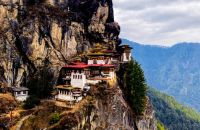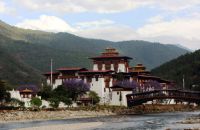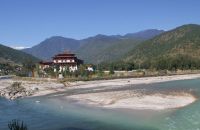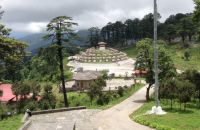Talk with our local travel specialist who can help organize your trip.
Top 7 valleys in Bhutan to visit
Although Bhutan is commonly thought of as a mountain nation that’s something of a false image. The real Bhutan is in fact a nation of valleys. All highly individualistic and – at least until recently – all largely cut off from each other and something of a world unto themselves. This means that each of Bhutan’s seven main valleys area story waiting to be told.
Each valley in Bhutan has its unique culture, wildlife, sights, legends, and experiences. With enough time you could explore all of these valleys and get a truly rounded overview of Bhutanese life, but most visitors to Bhutan have limited time and so need to focus on just a couple of different valleys. To help you choose which Bhutanese valleys to visit we’ve compiled a summary of what we think are the top 7 valleys in Bhutan to visit.
Most visitors fly into Bhutan so it’s almost a given that the Paro Valley (where the international airport is located) will be your first experience of this one-of-a-kind country. From this fascinating valley, you can either head west to the little-visited but wonderful Haa valley, or east towards the capital, Thimphu, and the many historic and contemporary sights of that valley. Continuing eastward from Thimphu each valley gets a little more remote and ever more interesting until you reach the cultural heartland of Bhutan, the three interconnected Bumthang valleys.
Table of Content
1. Bumthang Valleys
Easily the top valley to visit in Bhutan. The interconnecting network of valleys known as the Bumthang Valleys are the cultural and historical heartland of the nation. The Bumthang valleys, which sit bang in the center of Bhutan, contain some of the oldest and most significant monasteries and temples in all of the country. For all intents and purposes, this is where Bhutan was born, and it could be said that without the Bumthang valleys then there simply wouldn’t be a Bhutan. This was the stomping ground of Guru Rinpoche and wherever he wandered magic was sure to follow.
Today, that air of the surreal can still be sensed in the many different monasteries that line the riverbanks. Here temples pin down demons as big as the Himalayas itself, garudas fought snow lions, feisty female spirits attempted to create works of wonder in just a single night and monasteries are rumored to have once held all the glittering treasures of the world.
But as impressive as the artwork of humanity and the saints is, it’s Mother Nature who has truly created the masterpiece. The lumps and folds of the landscapes of central Bhutan are a natural adventure playground and there are endless possibilities to get out and enjoy it with hiking, mountain biking, and horse riding all on offer. In addition, you can visit sheep farms, cheese factories, and a brewery, catch some of Bhutan’s most memorable festivals, and stay in a faded old manorhouse hosted by one of the country’s best-known authors and historians.
Although you could tick off the valley's main sites in a busy day it’s far more rewarding to spend several days here (with a week you still wouldn’t have time to get bored) and visit quieter, small monasteries and enjoy the fabulous day walks that the valley offers. For most people, the Bumthang valleys are the highlight of Bhutan.
2. Phobjikha Valley
A small, alpine valley wedged between the Punakha and Bumthang valleys, the Phobjikha Valley is a true delight and will especially appeal to those interested in wildlife and hiking. That’s not to say that there’s cultural interest here.
The hilltop Gangtey Gompa completely dominates the valley, and the monks here tend to be very open to visitors. But what sets this valley apart from the others and makes it easily one of the top seven valleys to visit in Bhutan are the birds! Large numbers of elegant black-necked cranes flee freezing Tibet to spend the winter here. Local people are so enamored with these large birds that they’ve established a special black-necked crane festival which celebrates the bird's arrival each November. The birds are easy to see here and there’s also a crane rescue center which you can arrange to visit.
In addition to bird-watching, the Phobjikha Valley has some great day-walking possibilities. It’s not unusual to meet shepherds and nomads in the hills surrounding this wide, grassy valley. To top it all off there are some superb places to stay (including one of the best hotels in Asia, Third Rock can organize a stay). No wonder the Phobjikha Valley is one of our favorite valleys!
3. Haa Valley
Number three on our list of the top seven valleys in Bhutan is the Haa Valley. Frankly, it’s hard to believe that a place like the Haa Valley can exist so close to the urban heart of Bhutan – Paro and Thimphu. But, yet here, just one valley to the west of Paro, is a place that feels very far indeed from the modern world.
The steep valley slopes are smothered in dark, deep forests that hide small meditation caves, as well as chapels wreathed in legend. By contrast, the valley floor is a patchwork of barley fields, small villages of traditional timber housing, and giant gold-roofed monastery complexes.
Getting to the Haa Valley is a real highlight of a visit to this valley. The corkscrew road over the Cheli La (3998m), the highest driveable pass in the country, is one of Bhutan’s most exciting drives. Make sure to allow time to stop at the pass and hike to the Kila Gompa nunnery. Founded in the 9th century, it’s the oldest nunnery in the land. It’s also superbly sited, on a cliff face and with huge views over the forested hills and mountains. Once within the Haa valley itself, the two main sites are the Lhakhang Karpo and the Lhakhang Nagpo, but there are also numerous other religious sites in the hills, woodlands, and side valleys.
The great thing about the Haa Valley is that for the moment remarkably few tourists make the minimal effort required to get here and this helps lend the place a beautifully quiet ambiance in which days can be spent exploring religious complexes, scrambling up and down hillsides to marvelover valley views, or just passing the time of day in the many small villages that dot the valley.
Most Bhutan tour itineraries including the Haa Valley only stop here for a night or two. But, with so many opportunities to hike to little visited chapels and monasteries, we’d suggest a stay of no less than 3 nights. As the final icing on the cake, the Haa Valley is one of the best valleys in Bhutan in which to snuggle up in a homestay and enjoy the warmth and food of a Bhutanese family. Third Rock can help organize this for you.
Featured Trips
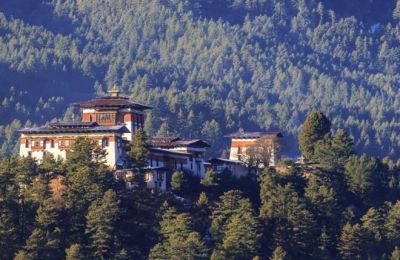
Western and Central Bhutan Tour - 9 days
The Western and Central Bhutan tour is well designed to offer you the perfect chance to explore the famous cultural hotspots, historical heritages, major tourist hubs of the Himalayan Kingdom of Bhutan.
Inquire Now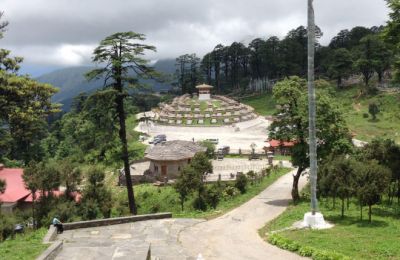
Bhutan West East Traverse Tour - 14 days
14 days of Bhutan West East Traverse Tour tour is an incredible journey that takes you to the major tourist destinations across the Bhutan and this tour is specially designed to give you a real taste of rural Bhutan.
Inquire NowWhere to travel next?
Get help from our travel specialists for holiday ideas that matches your interests.
4. Paro Valley
The Paro Valley is the one valley in Bhutan that almost every visitor to the country is certain to visit. Bhutan is a very vertically inclined country but the Paro valley contains one of the few flat areas within easy reach of the capital (Thimpu; a valley to the east) big enough for aeroplanes to safely land and so, naturally enough, this is where the international airport is located. In most countries, the area around the main airport is a mess of concrete, highways, and giant hotels. But that’s not the case with the Paro Valley. The Paro valley, through which the wide and shallow Paro Chuu (Paro River) flows, is primarily rural and has small farms and fields stretched across the valley floor with surrounding mountain slopes covered in forests of wrinkled conifer trees out of which poke ancient wooden monasteries–as well as a growing number of fabulous boutique hotels. But that’s not all.
The Paro Valley is home to what is certainly the most iconic site in the whole country: Paro Taktsangor the Tiger's Nest Monastery, that extraordinary monastery complex that clings to a cliff face like a desperate gecko. With all this on offer if you only have a few days in Bhutan then there’s a lot to be said for spending all your time in the Paro valley. Its mixture of historic sites and grand scenery, all overlaid in the legends and myths that so permeate everything to do with Bhutan, would mean that you’d end up with a pretty solid snapshot of Bhutanese life.
At the center of the valley, and immediately next to the airport, is the town of Paro. Like almost every bigger settlement in Bhutan the word ‘town’ paints an overly urban picture. Instead, Paro, which is the third biggest town in Bhutan, has a population of a mere 11,500 and is more village than a town. Size aside, it’s a lovely place with traditional, colorful wooden-fronted buildings and just a handful of small shops and restaurants.
As well as Paro Taktsang be sure to visit the stunning Paro dzong, or, to give it its full name, Rinpungdzong, which romantically translates to mean, the Fortress of the Heap of Jewels. It’s one of Bhutan’s most impressive dzongs; a huge complex of chapels, libraries, classrooms, and living quarters as well as the administrative offices of the district. Higher up the hill above Thedzong is the excellent National Museum.
5. Thimphu Valley
Perhaps naturally enough, everything in the Thimphu Valley revolves around the small capital, Thimphu (pop:115,000), which is the centre of government, commerce, and monarchy. Thimphu is where Bhutan is at its most cosmopolitan and globalized and where, for many of the city’s residents, mobile phones, shopping malls, and Instagramable cafes trump dzongs and chapels. But, as the capital, Thimphu and its surrounding valley also contain a huge number of historic sites dating to back to an older Bhutan. This mix of yesterday and tomorrow makes the valley a near-essential stop on any Bhutan tour and one of the top valleys in Bhutan to visit.
Unmissable sights here include Changangkha monastery with an impressive thousand-arm statue of Mahakarunika, the 17th Century Tashi Chodzong, which is today the seat of government, the National Institute of Traditional Arts and Crafts, and the huge and colorful Changlingmethang market, the country’s largest traditional fresh produce market, which takes place every weekend.
To get an overview of the city and the rugged surrounding valley, make a point of visiting the Buddha Dordenma. At a little over fifty meters high, this is one of the world’s largest statues of the Buddha and is a very popular place with locals and visitors from which to catch the setting sun.
Just to prove that absolutely everything in Bhutan is quirky, head to the Takin Preserve on the edge of the city where you can see Bhutan’s rare, and decidedly odd, national animal, the takin. Like a cross between a goat and a cow, there is a fascinating, and very bizarre, legend that explains why they look like they do and you’ll hear all about it at the preserve. Thimphu (and in fact Bhutan as a whole), is also unique in having no traffic lights. Instead, vehicles are directed by police officers performing a rather choreographed, dance-like bit of traffic control!
6. Punakha Valley
Lower (1,200 m), warmer, and with distinctly more tropical vegetation than central and western Bhutan’s other valleys, the Punakha Valley, is a quiet, rural place famed among visitors for the superb, riverside, Punakha dzong. Of all Bhutan’s many dzongs, this one, which dates from the 17th century, is the masterpiece. The large fortress-like complex looks its best in spring when masses of purple flowering jacaranda cover its exterior walls. But it’s what’s on the inside that really counts. Dozens of chapels, meditation rooms, monk's quarters, and shrine rooms stuffed with superb art and treasures. The monastery is one of the largest monastic communities in the country which means this is very much a living and breathing monastery.
Of the other sites in the valley, the most memorable is easily the Chimi Lhakhang, or the Temple of Drukpa Kunley, better known as the Divine Madman. This 15th-century saint is one of the most popular figures in Bhutanese culture, no doubt due to his rather unorthodox approach to Buddhist belief. He was partial to drinking and devouring huge quantities of meat. He was also rather partial to the fairer sex and gained a legendary reputation for his sexual exploits. His temple is now something of a fertility temple where childless couples come to be blessed by being tapped on the head by a massive phallic symbol!
Punakha is the center of Bhutan’s low-key white water rafting scene. Most rafting trips are fairly short and suitable for first-time rafters.
Punakha Valley is often treated as a quick overnight halt but many people find the intriguing sites and warmer climate appealing enough to wish they’d stayed for longer.
Featured Trips
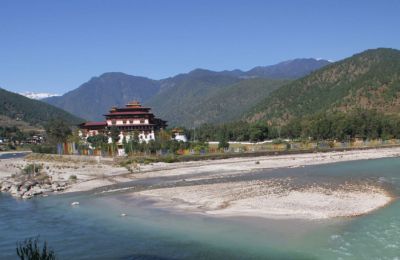
Bhutan Cultural Tour - 5 days
Bhutan Cultural Tour of 5 days lets you discover the rich Bhutanese culture. Visit ancient fortresses and Taktsang Monastery. Enjoy traditional hot stone bath.
Inquire Now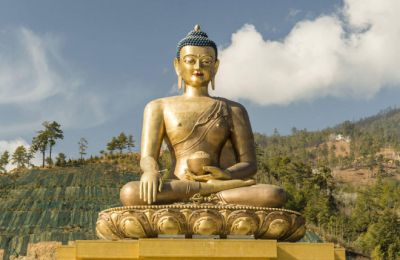
Bhutan Heritage Tour - 8 days
Bhutan Heritage Tour lets you explore centuries-old dzongs and Lakhangs built by Bhutanese kings and spiritual leaders. Take this Bhutan Heritage Tour and journey across the cultural hotspots of Bhutan, a fascinating Himalayan kingdom.
Inquire NowWhere to travel next?
Get help from our travel specialists for holiday ideas that matches your interests.
7. Trongsa Valley
Perhaps the most under-rated of the seven major valleys in Bhutan, the Trongsa Valley, which acts as the link between western and central Bhutan, is centered on the small town of Trongsa (elevation: 2,180 m). Precariously built along the backbone of a steep, forested ridge high above the icy waters of the Mangde Chuu River, the town is utterly dominated by the sprawling dzong. Jutting out on a spur of rock, it’s one of the most dramatically sited in the country. Around it spreads a tiny market and just two or three streets packed with traditional housing.
Most people only stop here overnight while traveling between Punakha and the Bumthang region, but alongside the dzong, there’s also one of the best museums in Bhutan and some interesting sights in the surrounding countryside which together make for tempting reasons to spend another night here. Whether you’re coming to to Trongsa from the west, east of even the south the drive is memorably spectacular and, thanks to narrow roads hammered into sheer mountain slopes, sometimes a little bit hair-raising!
- Written by: Naba Raj Amgai
Updated: Aug, 8, 2024

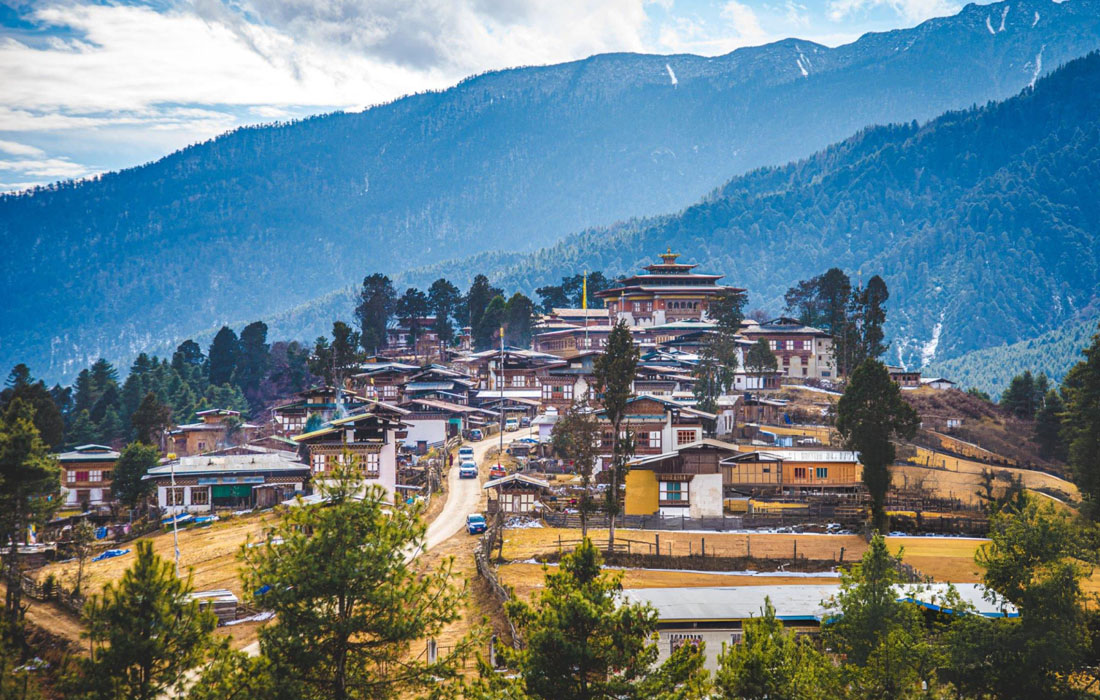

.jpg)






